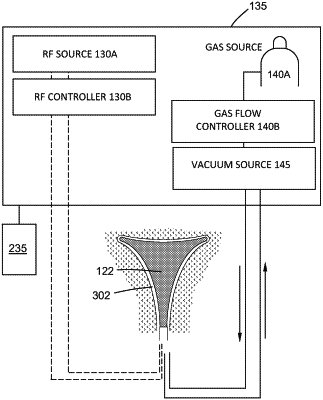| CPC A61B 18/1485 (2013.01) [A61B 2018/0022 (2013.01); A61B 2018/00232 (2013.01); A61B 2018/00559 (2013.01); A61B 2018/00642 (2013.01); A61B 2018/00702 (2013.01); A61B 2018/00744 (2013.01); A61B 2018/00791 (2013.01); A61B 2018/00821 (2013.01); A61B 2018/00863 (2013.01)] | 11 Claims |

|
1. A system for treating a patient's uterus, said system comprising:
a probe having a working end including an ablation mechanism adapted to be positioned in a patient's uterine cavity;
a fluid source;
a first fluid path through the probe configured to deliver a first fluid flow from the fluid source into the uterine cavity exterior of the working end, wherein a first flow meter is configured to monitor a flow rate of the first fluid;
a second fluid path through the probe configured to deliver a second fluid flow from the fluid source into the working end, wherein a second flow meter is configured to monitor a flow rate of the second fluid; and
a controller configured to determine whether the flow rate of the first fluid changes during the introduction of the second fluid into the working end to characterize the uterine cavity as being intact.
|